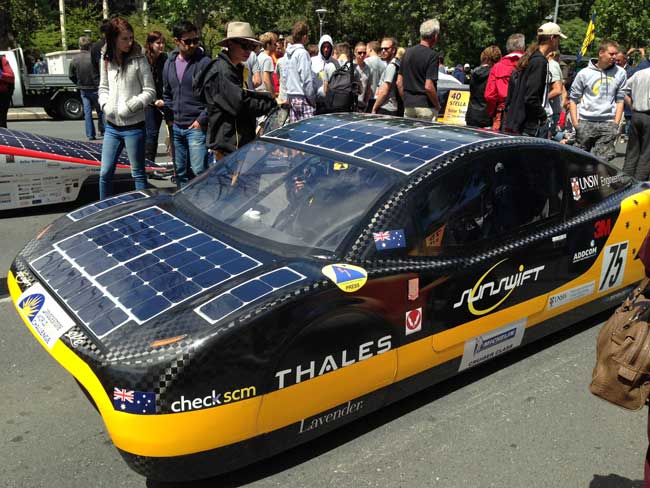Ever considered the seemingly endless possibilities of solar thin film technology for mobile energy generation? Mr Li Hejun, CEO of China-based thin film solar company Hanergy Thin Film Power Group Ltd certainly does and outlined his vision (or dream depending on your point of view), of a future where this technology dominated mobile energy needs.
Mr Li presented his strategy for mobile energy future as “…a revolution in the way energy is generated and used” in a keynote speech delivered at a ceremony in China last week to launch its global thin film solar product innovation competition.
According to the company press release:
“…With cutting-edge features such as flexibility, light weight, superior low light performance, and diversified colors and shapes, thin film solar technology is widely applicable to a variety of fields such as distributed power generation, mobile 3C products, wearable devices, fully solar-powered automobiles, solar-powered unmanned aerial vehicles and satellites,” said Mr Li at the ceremony.
Mr Li goes on to predict a future for solar thin film technology that can be described as wide ranging, even massive. He describes the solar car market in China as having “huge potential” and a “new pillar of growth”.
“Growing environmental pressure and depletion of fossil fuels will help drive the demand for electric vehicles and the mobile energy systems that power these vehicles. Highly mobile and adaptable thin-film solar technology is the best solution for these demands and will form a new pillar of growth in the “new normal” phase of China’s economy,” he said.
While Mr Li’s talk was directed at Chinese business leaders and consumers, the relevance of the technology for Australia is obvious? With the technology allowing for an estimated 80 to 100 kms on 4 hours of sunlight, the potential for the Australian solar car market is huge.
“According to calculations, when a one-ton car is integrated with six square meters of Hanergy’s highly-efficient gallium arsenide flexible thin-film module, it can travel 80 to 100 kilometers on an average of four hours of sunlight per day. The solar car market has huge potential as it is expected to reach 46 GW by 2020,” described Mr Li.
The combination of solar thin film technology and electric cars may well be the new way forward in the burgeoning solar energy car market if the claims of Hanergy Thin Film Power Group Ltd are to be believed. SolarQuotes owner Finn Peacock agrees: “interesting – 80km on 4 hours of sunlight!” was his comment. What’s your thoughts?


 RSS - Posts
RSS - Posts



OK lets wind the calendar forward a decade or so. Thin film Electric cars are a lrge component of vehicular traffic
How do you imagine our government masters will TAX us on our free fuel? Maybe a hi tech GPS that logs every km we drive on the road and applies a monthly direct debit.
Hi Ron,
Great point! I think it will move to pay per km as you predict.
Finn